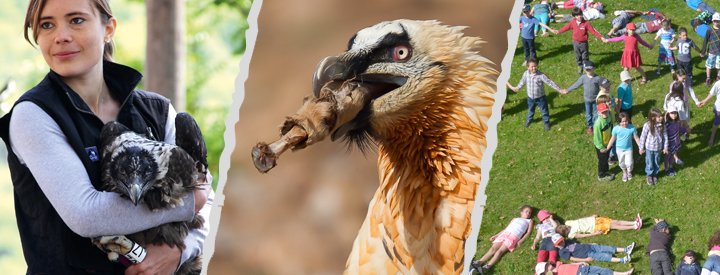Assessing the project’s footprint

The project’s global data and impacts will be regularly assessed throughout its life cycle via monitoring and scientific evaluations. The sustainability of the actions engaged will be covered in a specific strategic plan.
Several results indicators
The project will enable the creation of new Bearded Vulture core populations in the south of the Massif Central and Drôme. This objective aims at opening the territory to the populations in the Alps and Pyrenees and thus promote genetic diversity via exchanges between individuals and more globally within the European metapopulation.
Several expected results
Creating new core populations
- Planning 2 to 3 additional release sites, as well as their maintenance and release operations.
- Supply of at least 4 birds/year by the VCF throughout the project (2015-2021).
- Release of 2 to 4 birds/year on average throughout the project.
- Stationing of 1 to 2 pairs in the LIFE area by the end of the project.
- Promoting exchanges between birds from different core populations of the Alps and the Pyrenees by the 2nd year of the project.
Improving food resources
Creating and implementing 10 to 23 feeding sites, 6 to 16 “specific Bearded vulture feeding places”, and 0 to 15 natural rendering sites, in addition to the current feeding sites.
Ensuring site tranquility and security
- Undergrounding dangerous power lines in the Baronnies area (3.5 km sections), and in the Departments of Lozère and Aveyron (2.5 to 5 km sections/year).
- Including the mappings of high-risk areas for the Bearded Vulture in local SRCAE (Regional Cimate, Air, Energy Plans).
- Monitoring and surveillance of toxic threats and preparing preventive risk management plans.
- Testing and promoting the use of lead-free ammunition in Lozère, throughout the LIFE project.
- Tending to Bearded vultures in distress via a rescue center network.
- Limiting sources of disturbance, consolidating partnerships and strengthening information and awareness–raising campaigns.
- Surveillance of release sites via adequate monitoring operations and visitor information points.
Improvement of knowledge and program assessment
- Assessing demographic and spatial data.
- Modelling population dynamics.
- Monitoring populations via indicators and a technical guide.
- Drafting at least one scientific publication.
The sustainability of the results will be ensured within the framework of the European action plan and strategy defined for the program.